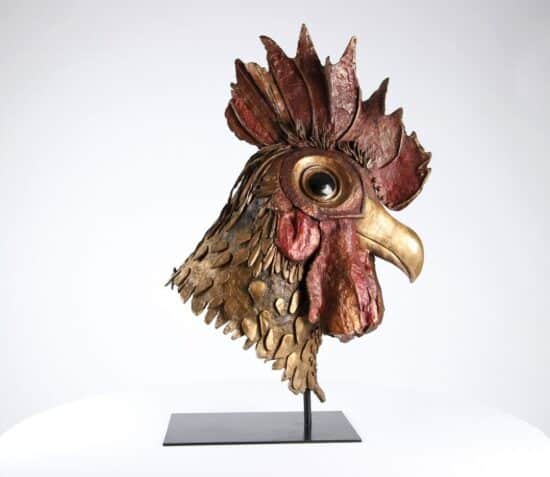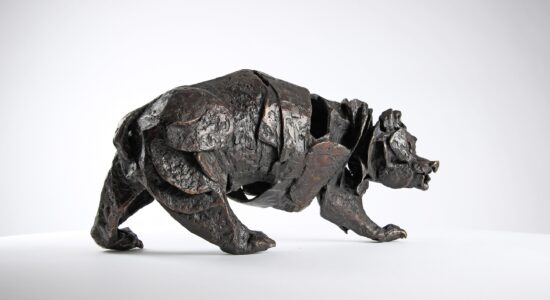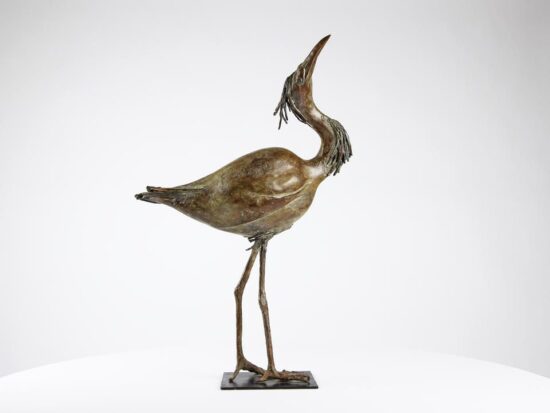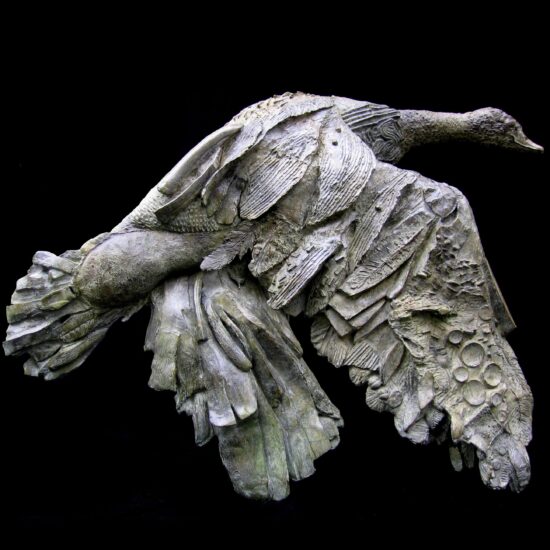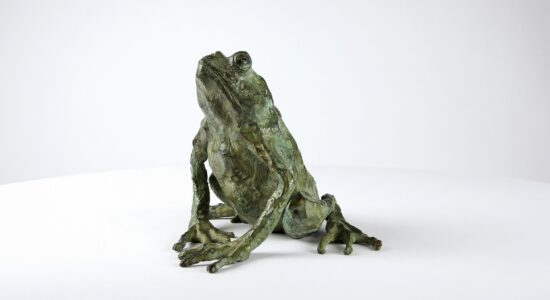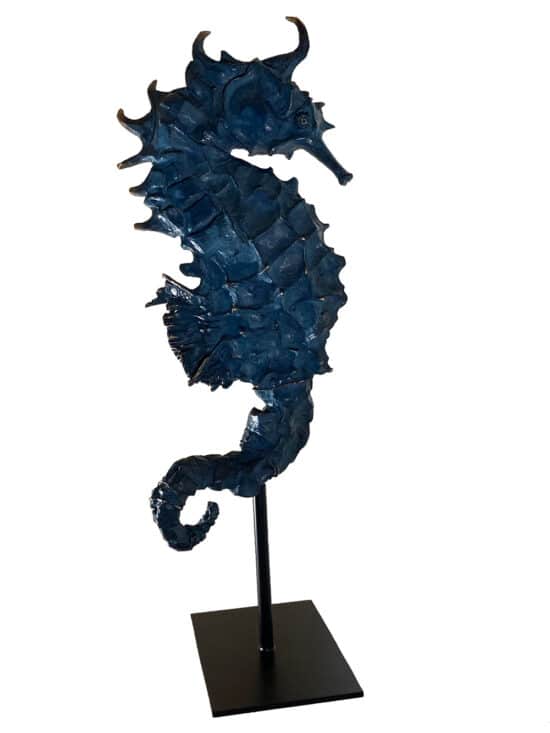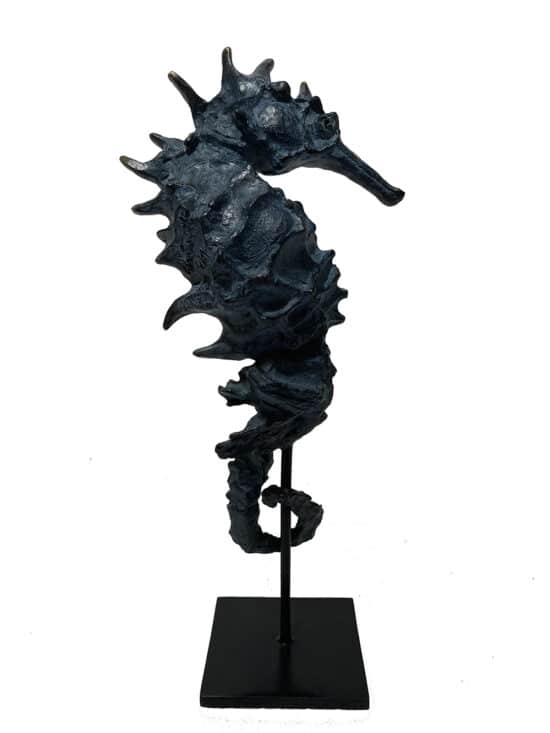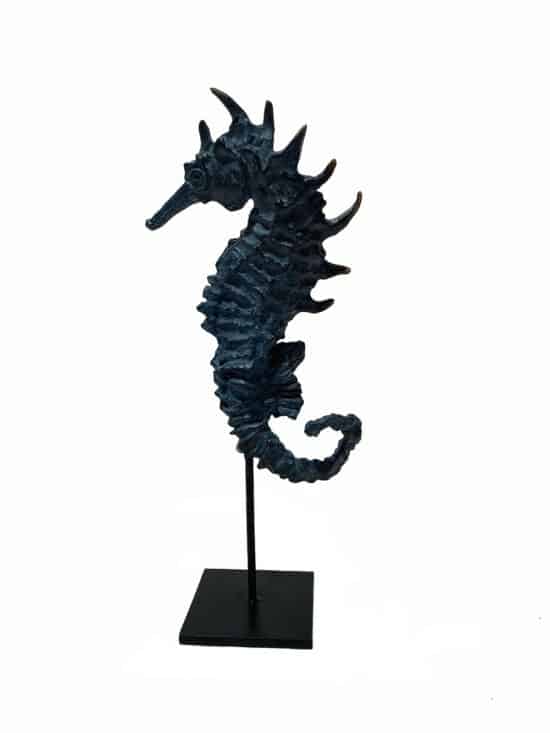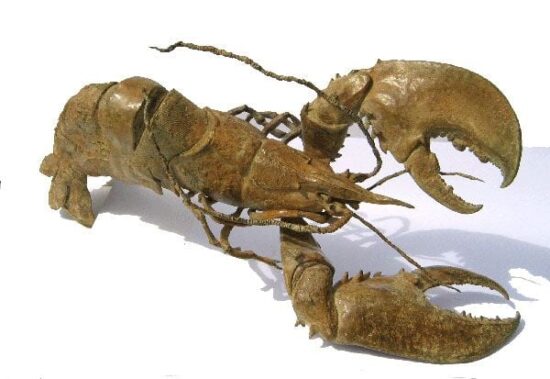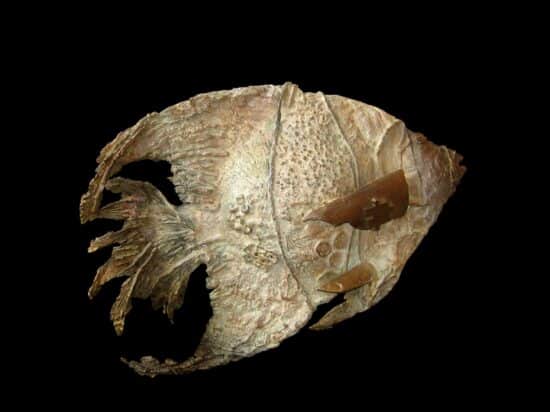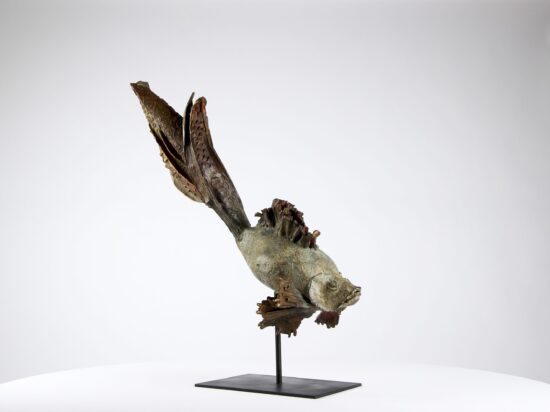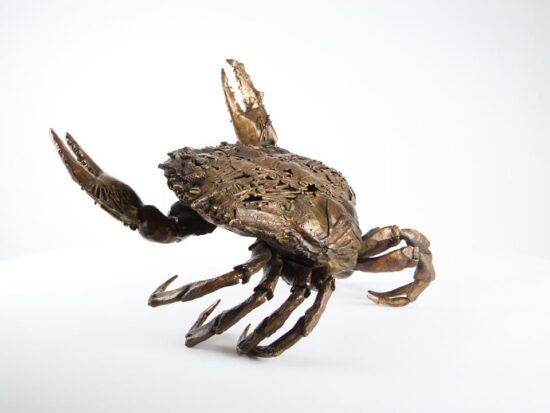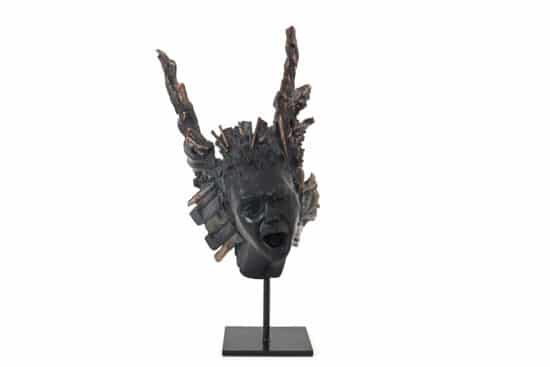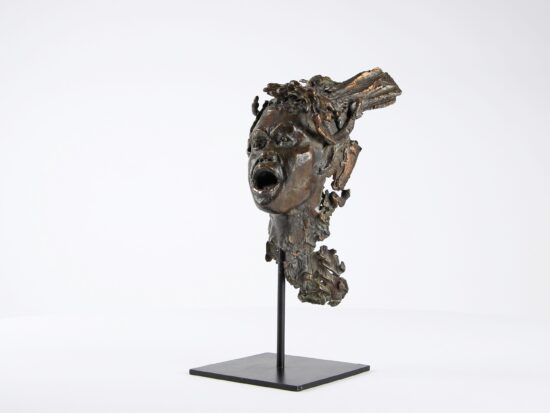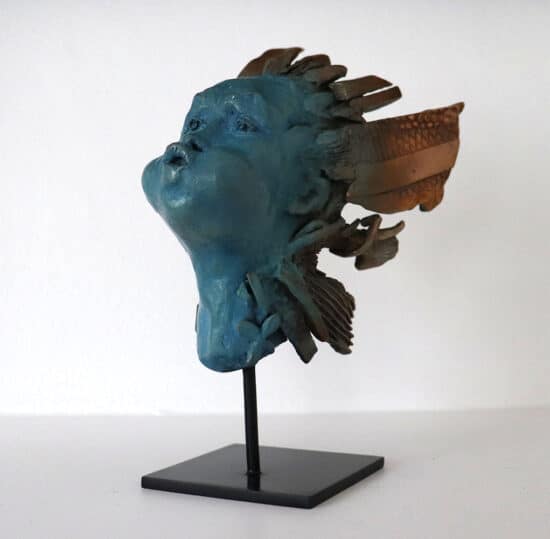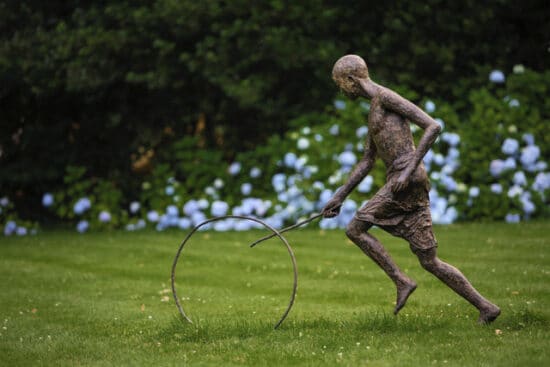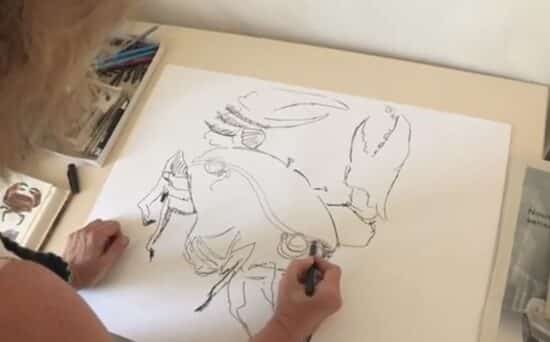Animals
Marine Animals
Marine Characters
Biography
Contemporary French sculptor Chésade mainly draws her inspiration from the animal and marine worlds. Her masterful bronze sculptures are deftly created, with the raw material enriched by fine detailing and enhanced with a luminous patina. The artist’s works therefore become “tactile landscapes” imbued with her poetic vision and able to convey the animals’ energy and essence.
Literary and artistic studies in Paris
Chésade currently lives and works in Sainte-Maure de Touraine, France.
She was born in 1960 in Paris and, aged 12, discovered modelling and the joys of working with clay at the Arts Décoratifs workshop. She then went on to study classical drawing at the Académie de la Grande Chaumière. Having completed a degree in French Literature, a DEUG Diploma in English and the Sciences-Po Diploma, Chésade enrolled at the École nationale supérieure des Beaux-Arts de Paris in 1984 to study sculpture in Maurice Calka’s clay and bronze life sculpture workshop.
She then spent around a decade working in advertising and communications, becoming International Marketing Director (Fragrances) then Internet Committee Director for L’Oréal. Then, she decided to focus on bringing up her two children and her work as a sculptor, including extensive research into ceramics and painting.
Chésade: a poetic vision that bronzifies the animal world
The artist mainly takes her inspiration from nature, especially animals, whose beauty and enigmatic characters fill her with wonder. Through careful observation, she has produced original works brimming with the feelings and emotions they create within her: “For me, sculpting is like ‘touching life’. It’s not a question of locking life away in an ever-imperfect naturalist imitation, but of having a poetic vision.”
Chésade’s creative process therefore begins with observation. Her eyes “photograph” what they see and store a library of images: a “library of feelings”. She then does some sketches to bring out the characters of one or more forms of the animal that have captured her attention. Next, the sculpting begins. To create her bronze works, Chésade mostly uses a lost-wax casting technique, which allows her to maintain the creative energy and the quality of the details. The final stage is finishing and enhancing the bronze sculpture with a natural, warm and subtle patina.
Rather than being figurative, Chésade’s contemporary sculptures are designed to express and convey the emotion of the animal or character, their specific energy and their essence. The many inlays in the bronze make her works tactile landscapes that tell a story, combining contemporary and ancient themes and symbols.
“If you were to define my style now, I think you’d say it was dreamlike. You’d say nature is the focus. You’d talk about materials and emotions, and, above all, about poetry.”
Fascination for the marine world and its sculpting potential
Chésade regularly sails in the Mediterranean and notices the natural wealth of the sea each and every time. She explains her fascination for the sea as follows: “On the water, I have to face the power of the elements, and the intensity of the colours and the air. Under the water, I love the beauty of the unusual forms and the noise of the backwash: everything is different, beautiful and violent.”
The artist thinks the unique and dreamlike marine world has significant potential still to be explored in sculpture. Through her figurative sculptures, she hopes to champion the fragile and little-known beauty of this environment. Since 2002, Chésade has specialised in this area: fish, crabs, lobsters and seahorses feature in her artistic work, giving her the variety and richness of expression she seeks.
Recognition in the world of sculpture: exhibitions and prizes
Since 2008, Chésade has had her work exhibited many times, where it has often been noticed by private collectors. Her sculptures can be found in France, Great Britain, Switzerland, the USA, Japan and Australia. The contemporary sculptor has won two medals at the Paris National Maritime Museum Biennial (2009 and 2013) and a gold medal at the French National Animal Artists’ Fair in 2009. She also sculpted the Prix d’Amérique equestrian trophy in 2010. In 2012, her body of animal work was honoured when she was awarded the prestigious Sandoz prize.
CV
Education
- Graduate from School of Fine Art (ENSBA), sculpture session in the Claka’s workshop « modèle vivant » terracotta and bronze, Paris, France
Exhibitions
- 2021 – Exhibition Musée Boesch (La Baule, France)
- 2019 – GAME FAIR, (France)
- 2019 – Staphorsius Gallery, (Netherlands)
- 2019 – ART FAIR ANTIBES, France
- 2018 – Invitée d’honneur SNBA, Espace Landowsky, (Boulogne Billancourt)
- 2018 – Exhibition “les artistes et la mer”, St Malo, (France)
- 2017 – ART FAIR ANTIBES, (France)
- 2017 – Exhibition at Hôtel Le Castellet
- 2017 – Special guest of Salon d’automne de la société des Beaux-Arts, Boulogne Billancourt (France)
- 2017 – Septembre animalier Bruxelles (Costermans Gallery, Bruxelles, Belgium)
- 2016 – Exhibition at Hôtel Le Castellet
- 2016 – 12th International Biennale of Animal Sculpture (Rambouillet, France)
- 2016 – International Fair of Animal artists (Bry-sur-Marne, France)
- 2015 – Special Guest of Palaiseau Artists Fair
- 2015 – Exhibition CBB, Urban Art Fair, (Paris)
- 2015 – Autumn Fair, (Paris, France)
- 2015 – Personnal exhibition at Chikabee De Haan Gallery, (Belgium)
- 2015 – Art Fair « Envies d’été », (Chatou, France)
- 2015 – Exhibition at Estades Gallery, (Toulon)
- 2015 – ART FAIR ANTIBES, (France)
- 2015 – Exhibition at l’Hôtel Le Castellet, (France)
- 2015 – “Wildlife September Bruxelles”, SAB Expo, Ancienne Nonciature de Bruxelles (Bruxelles, Belgium)
- 2014 – Autumn Fair, (Paris, France)
- 2014 – Marine Art Fair, Marine Museum (Paris, France)
- 2014 – ART FAIR ANTIBES, (France)
- 2014 – Exhibition on the occasion of the inauguration of the new Vincennes Zoo, (Saint-Mandé)
- 2014 – Estades Gallery, (Lyon, France)
- 2013 – ART en Capital, group « comparaison » at Grand Palais, (Paris, France)
- 2013 – Salon d’Automne, SNAA selection November 2013
- 2013 – Exhibition “les artistes et la mer”, (St Malo, France)
- 2013 – Estades Gallery, place Vendôme, (Paris, France)
- 2013 – Zurich ART FAIR, (Switzerland)
- 2013 – Exhibition at Musée François Pompon, (Saulieu, France)
- 2013 – Guest of Honor at the Salon National des Artistes Animaliers
- 2011 – Exhibition at BAC Gallery, (Saint-Martin-de-Ré, France)
- 2011 – Exhibition at Jean François Heim Gallery, (Paris, France)
- 2010 – Exhibition at Hugues Pénot Gallery, (La Baule, France)
- 2010 – Exhibition at en Ré Gallery, (Bois-Colombes, France)
- 2009 – Antiques Fair, (Paris, France)
- 2008 – Exhibition at Breheret Gallery, (Paris, France)
- 2008 – Exhibition at De l’Estuaire Gallery, (Honfleur, France)
- 2008 – Exhibition at Brissot & Lintz Gallery, (Paris, France)
Awards & Residencies
- 2012 – Marcel Edouard SANDOZ Price
- 2010 – Sculpture for the US Grand Prix Trophy
- 2009 & 2013 – Biennial of the Musée National de la Marine de Paris, Winner of two medals
- 2009 – National Salon of Animal Artists, Gold Medal
- 2008 & 2009 – Salon de La Marine, Bronze Sculpture Medal
Articles
Contemporary statues: The views of three women artists
These days, the word statue evokes monumental and solemn sculptures found in public squares, immobile celebration of heroes whose names are often...
Introducing Chésade
Chésade entertains a veritable passion for bronze, that primitive substance, which has come down through the ages, that she uses in sculpting her...


